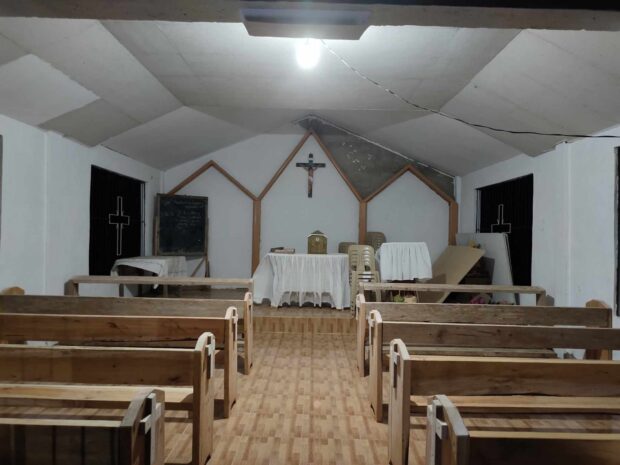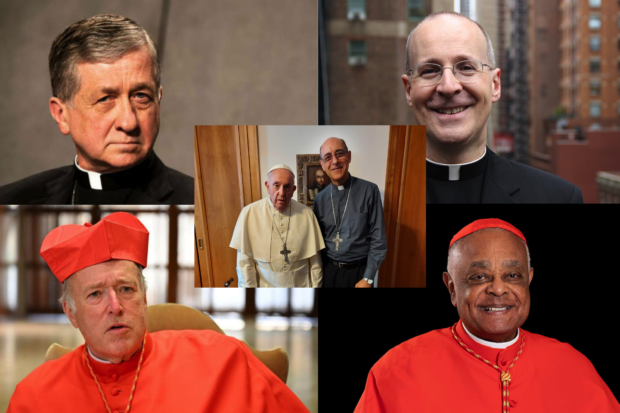Ideology is not the same thing as religion. Most religions, even though often wrong about many things, seek to better the person practicing it; they have similar moral codes, which typically include kindness to those less fortunate and decency toward others. Ideology, on the other hand, cares little for individual persons and focuses completely on the goals of The Cause. Things like kindness and decency are jettisoned in pursuit of those goals. Think of the difference between a Quaker and a Communist: which would you rather have as a neighbor?
I bring this up because of the recently released memoirs of Pope Francis. At one point in the included interviews, the subject of the Covid vaccines came up. I’m not here to re-litigate either the morality and effectiveness of the vaccines. We covered this topic in-depth here at Crisis, and to be honest, what we said back then has turned out to be completely true. In short, the vaccines were tainted with abortion and the morality of taking them was at the very least questionable. No one was morally required to receive the vaccines, as even the Vatican acknowledged. As to effectiveness, only the most hard-core ideologues still think the vaccines were able to stop or even substantially slow the spread of Covid. People of good will now recognize the vaccines at best simply lessened the symptoms in some people, and at worst caused more injuries than they prevented.
Sadly, Pope Francis appears to be one of those hard-core ideologues, not a person of good will. And like most ideologues, he is happy to deny reality and to demean and disparage any who might disagree with him. He stated that “being against the antidote [the Covid vaccines] is an almost suicidal act of denial.” Considering the fact that there is absolutely no evidence that the Covid vaccines prevented deaths on any significant scale (and likely caused deaths in some who took them), this statement is itself an “act of denial:” a denial of reality. But this is the way of the ideologue: reality and facts don’t matter; all that matters is The Cause.
But it gets worse. Francis then made a veiled—and disgraceful—comment about Cardinal Raymond Burke, who opposed the vaccines and almost died of Covid. The pope said, “There were even a few anti-vaxxers among the bishops: some came close to death.” This was the second time Francis made such a jab at Cardinal Burke. He describes Burke as an “anti-vaxxer” when he knows that neither the Cardinal nor most opponents of the Covid vaccines were against all vaccines, and he implies that Burke almost died because he didn’t get the vaccine when those who didn’t get vaccinated didn’t have higher death rates than those who did get vaxed.
To be honest, my first thought upon reading the pope’s comments was, “Is he really so petty?” Not only are his statements not very Christian, they are not even decent. I wouldn’t expect such a low remark from a good-natured atheist, much less a Catholic, much less the leader of the Catholic Church. Even if the pope were right about the effectiveness of the vaccine (but again, he isn’t), to treat someone’s serious illness as a means to promote one’s viewpoint is despicable.
Unfortunately, though, we’ve come to expect this from our current leader. Like the ideologue he is, Pope Francis treats his perceived enemies with contempt. It’s no secret the pope doesn’t like Cardinal Burke and so he is an obstacle to be overcome in Francis’s drive to achieve his goals. What’s amazing is how much both the mainstream and Catholic media still carry water for Francis, claiming he’s about “mercy.” Perhaps for those who don’t dare raise their voices against his Program, but not to any who put the Faith (or medical safety) before obeisance to the Pope’s Program.
While this behavior from the Supreme Pontiff is disappointing and discouraging, it’s no longer surprising. Just yesterday the Vatican News website featured an image created by the monster Fr. Marko Rupnick on the front page. This is a man who has done such horrific and blasphemous acts I don’t want to even list them here. Yet Pope Francis’s Vatican has such contempt for Rupnick’s victims that they still treat the disgraced priest with respect and even admiration. Why? Because Rupnick has been an ideological friend, and ideologues are as forgiving of their friends as they are ruthless to their enemies.
I realize bad news related to Pope Francis has, at this point, become wearying. We don’t cover every single uncharitable act or confusing statement made by Francis. Yet it is important to periodically note that, like some popes before him, this pope is not a good man, much less a good pope. As we near the end of Lent, let us offer prayers and penances for Holy Mother Church, and pray that she be blessed with a good and holy pope, or even a decent one, very soon.




